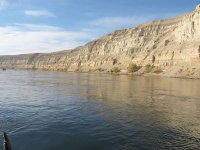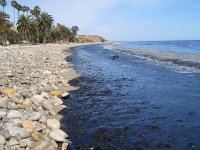$48 Million Proposed for Salmon Habitat Restoration Projects in Lower Duwamish River
January 28, 2021
The U.S. Department of Justice is proposing a $48.4 million settlement to partially fund natural resource restoration in Superfund sites along Seattle’s Lower Duwamish River. The total includes around $800,000 for past assessment costs, and the rest would go toward restoration.The consent decree describing the settlement—and a restoration plan to restore habitat for protected salmon and other resources impacted by pollution—are now both out for public comment.
The proposed settlement is on behalf of NOAA and the other Elliott Bay Trustees, and is with Vigor Industrial LLC and Exxon Mobil Corp. Other Trustees include the U.S. Department of the Interior, the State of Washington, the Muckleshoot Indian Tribe, and the Suquamish Tribe.
The 30-day comment periods for both the lodged consent decree and draft restoration plan are open through March 1, 2021. More information on these separate opportunities to comment are below.
Proposed Settlement and Consent Decree
The consent decree proposes to settle claims arising from injuries to natural resources from hazardous waste pollution in the Lower Duwamish River, Harbor Island, and Lockheed West Superfund Sites.
Hazardous substances have been released in this industrialized part of the Lower Duwamish River since the early 1900s. Over 30 different pollutants have been found in the sediment, which have gotten into the water and food webs. The pollution has resulted in injuries to fish, birds, wildlife, and their habitats. It has also impacted outdoor recreational opportunities, including recreational fishing.
Once approved and entered by the court, the consent decree would resolve the liability of the Vigor Industrial LLC and Exxon Mobil Corp. Both are liable for damages for injury to, destruction of, loss of, or loss of use of natural resources, as well as the costs of assessing those injuries.
Comment on the Consent Decree
Please send your written comments on the consent decree to the Department of Justice no later than March 1, 2021. For a copy of the consent decree, please see the Department of Justice website: https://www.justice.gov/enrd/consent-decree/us-et-al-v-vigor-industrial-llc-and-exxon-mobil-corporation
Submit comments:
-
By email to: pubcomment-ees.enrd@usdoj.gov
-
By mail to:
Assistant Attorney General, U.S. DOJ—ENRD
P.O. Box 7611
Washington, DC 20044-7611
Draft Restoration Plan
The draft restoration plan (PDF, 38 pages) proposes Vigor Industrial LLC and Exxon Mobil Corp. build and maintain a habitat restoration project at a Vigor facility located on Harbor Island. Called the Southwest Yard project, it’s located along the west waterway of the Lower Duwamish River. The companies will also monitor and maintain another nearby restoration project, the West Waterway Bench, constructed in 2006.
Combined, the proposed projects will restore more than 3 acres of different estuary habitats, including marsh, channels, and tidal areas in the river. Additionally, almost 6,000 chemically-treated wood pilings and a total of 2.74 acres of overwater structures, like docks and piers, will be removed.
These projects will provide critical habitat for many species, including threatened and endangered salmon. These habitat types are scarce in the Lower Duwamish River and provide important food sources, and rearing, refuge, and spawning areas for fish and wildlife. Estuaries are often called the “nurseries of the sea” because so much marine life reproduces and spends the early parts of their lives there.
Comment on the Plan
Please send your written comments on the draft restoration plan no later than March 1, 2021:
-
By email to: Jeff_krausmann@fws.gov
-
By mail to:
Jeff Krausmann
U.S. Fish and Wildlife Service
Washington Fish and Wildlife Office
510 Desmond Drive SE, Suite 102
Lacey, WA 98503-1263






